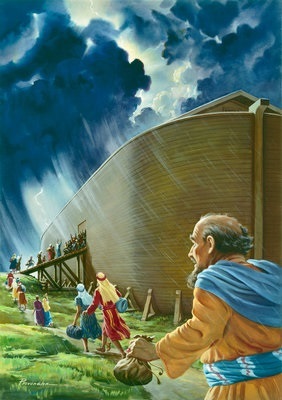Why Are There 360 Days to a Year in Bible Prophecy?
While we are studying prophecy, with an emphasis this week on the book of Genesis, I thought it might be a good idea to elaborate on the day-for-a-year principle in prophecy and use the story of Noah, in the book of Genesis to illustrate why there are only 360 days in a prophetic year instead of 365. 1
Occasionally, when I am studying Daniel and Revelation with someone, they will question how we get 360 days to a prophetic year instead of 365. First of all, an online article published by the Cambridge University Press 2 confirms that ancient Israel had a 360-day year for calculation purposes.
The story of Noah also confirms that in Bible times, each month had exactly 30 days, thus giving us 360 days in a biblical year. 3
The first time we find a day for a specific year in prophecy is in the book of Numbers.
According to the number of the days in which you spied out the land, forty days, for each day you shall bear your guilt one year, namely forty years, and you shall know My rejection. Numbers 14:34
Later, Ezekiel repeats this idea of a day for a year.
For I have laid on you the years of their iniquity, according to the number of the days, three hundred and ninety days; so you shall bear the iniquity of the house of Israel. And when you have completed them, lie again on your right side; then you shall bear the iniquity of the house of Judah forty days. I have laid on you a day for each year. Ezekiel 4:5-6
So now, how does the story of Noah and the flood help us establish one year equaling 360 days to a year in Bible prophecy?
In the six hundredth year of Noah’s life, in the second month, the seventeenth day of the month, on that day all the fountains of the great deep were broken up, and the windows of heaven were opened. Genesis 7:11NKJV
And the waters prevailed on the earth one hundred and fifty days. Genesis 7:24 NKJV
And the waters receded continually from the earth. At the end of the hundred and fifty days the waters decreased. Then the ark rested in the seventh month, the seventeenth day of the month, on the mountains of Ararat. Genesis 8:3-4 NKJV
Here we clearly see that from the 17th day of the second month to the 17th day of the seventh month is exactly 150 days. Every month had 30 days, equaling 360 days for a year. The 42 months of Revelation 13:5 would thus be 1260 prophetic days or 1260 years. 4 and “Appendix Two: The day-for-a-year principle,” accessed May 5, 2024.]
- This post is re-published from May 2024 since it is relevant to current lessons. ↩
- The article “A 360-Day Administrative Year in Ancient Israel: Judahite Portable Calendars and the Flood Account,” by Jonathan Ben-Dov, appeared in the Harvard Theological Review / Volume 114 / Issue 4 / October 2021. It was published by the Cambridge University Press on November 10, 20221. While not everyone agrees with the conclusions of the author, he makes a compelling case for his conclusion. You can follow the link and judge for yourself. ↩
- The Jewish 360-day luni-solar calendar was adjusted by adding a leap month of 30 days every six years to coordinate with the solar year. See “Bible Prophecy Year of 360 Days,” accessed May 6, 2024 ↩
- See also “What the Bible says about Day-for-a-Year- Principle,” accessed May 5, 2024 ↩
 (22)
(22)
